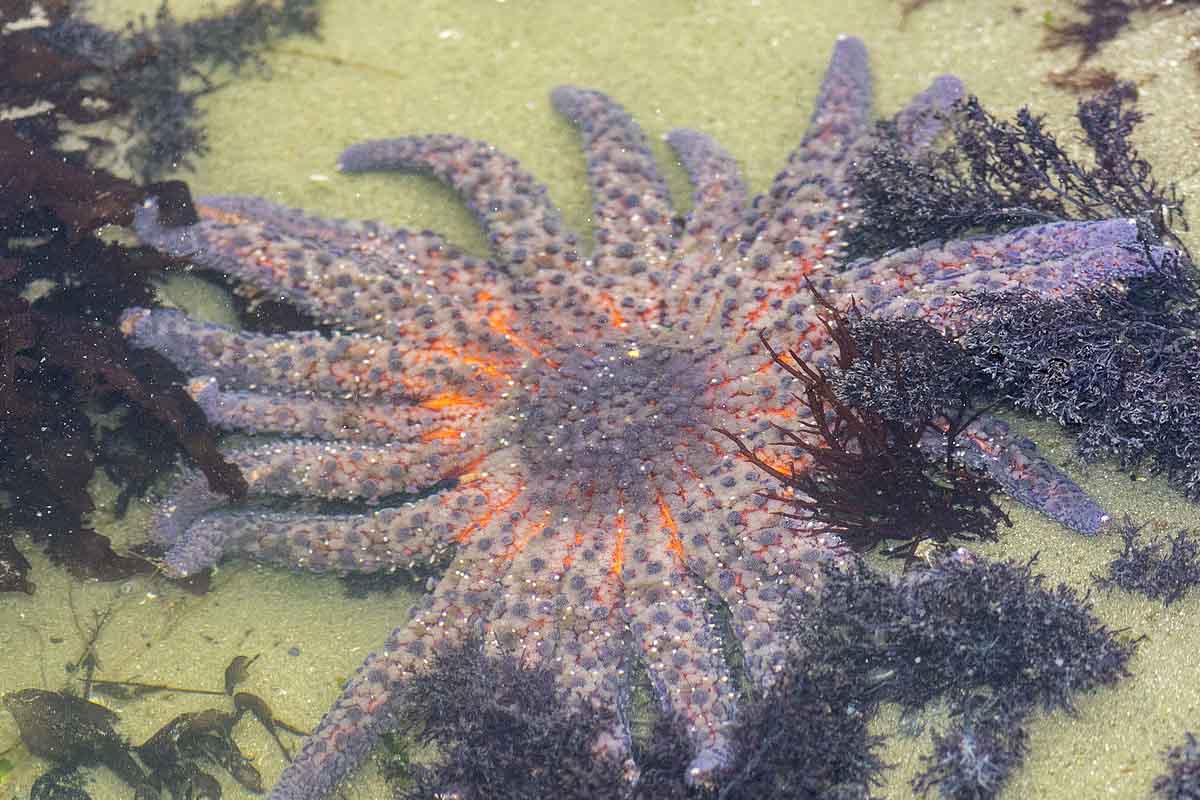Sunflower starfish, ravaged by a mysterious disease, are at the center of a conservation program to repopulate oceans and save kelp forests

@Jerry Kirkhart – Wikimedia Commons
A starry night evokes magic, a sense of wonder, or romance. But have you ever thought about a starry sea? There are nearly 2,000 species of starfish worldwide, each playing a vital role in our oceans. Unfortunately, a mysterious disease has struck these creatures, decimating populations along the west coast of North America and causing dramatic imbalances in marine ecosystems.
The impact on Kelp forests
Kelp forests, once lush, have been devastated by sea urchins, deprived of their primary predators. Yes, despite their tranquil appearance, many starfish species are voracious predators that play a crucial role in marine ecosystems. For example, the sunflower starfish, one of the largest and fastest species, primarily feeds on sea urchins, mollusks, and other invertebrates.
Their predation helps maintain balance in marine communities, preventing the overpopulation of certain species that could otherwise devastate the habitat, as has happened in the kelp forests along the west coast of North America. Now, a group of scientists and aquariums worldwide is working tirelessly to save these extraordinary creatures and restore them to their natural habitats. What does the future hold for these sea stars?
Ten years ago, the sunflower starfish population collapsed. This loss had disastrous consequences for the kelp forests, as sunflower stars are voracious predators of sea urchins. When over 90% of the Pycnopodia population disappeared following a disease outbreak that began in 2013, the sea urchin population exploded. These spiny herbivores are now ravaging the kelp forests, turning them into vast urchin barrens.
Research and conservation efforts
According to Drew Harvell, a marine ecologist at Cornell University and Friday Harbor Labs, the extent of the starfish disease is unprecedented, stretching from Mexico to Alaska and affecting over 20 species. There have been past starfish die-offs, like the one in the 1970s that affected Heliaster kubiniji, but none of this geographical scope and species variety.
In 2019, marine biologist Jason Hodin of the University of Washington was the first to attempt to breed and study sunflower starfish in captivity. The success ignited hope and initiated the Pycnopodia recovery program, culminating in the sunflower starfish being listed as critically endangered on the IUCN Red List in 2020.
A future of hope for starfish
Thanks to conservation efforts along the west coast and beyond, starfish may one day return to populate our oceans. Ashley Kidd, aquaculture program manager at the Sunflower Star Laboratory, highlights the dedication and passion for conserving Pycnopodia. The Association of Zoos and Aquariums now has a SAFE (Saving Animals From Extinction) program dedicated to these endemic starfish, aiming to preserve and repopulate this unique species.
The road to recovery for sunflower starfish is long, but advances in research and captive breeding represent a significant step towards their reintroduction into the wild. With increasing attention to invertebrate conservation and a more holistic understanding of marine ecosystems, there is hope to restore balance to kelp forests and save these fascinating marine creatures.
Source: Sunflower Star Laboratory
